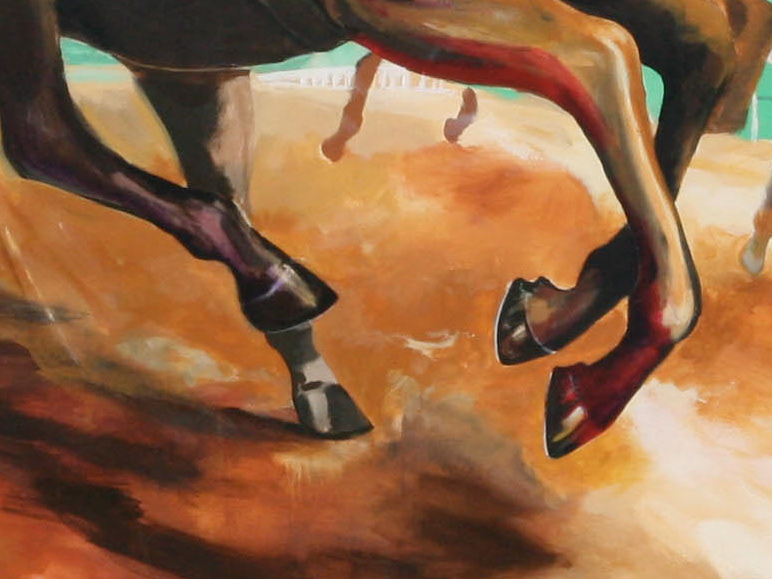Homo Techne, It may be difficult to see at first, but near the bottom of this painting are the words, Homo techne. The term refers to our species as tool makers and tool users over millennia. We constantly invent new tools to innovate and rebuild our cultures. Homo techne is an integral part of our humanity, with positive and negative impacts, now becoming more evident, as the climate crisis and social crises multiply. The lonely paddler here is also an example of homo techne, but at simpler scale, not the scale that destroys our natural world. Here, the adventurer firmly clasps his tool, the ore. And the ore is suspended mid-air to emphasize the moment of action and choice on which the future depends. Before him swim two orcas, representing the power of the natural forces we must deal with. To be in the presence of any great predator is a humbling experience because we are in their home. Homo techne is a reminder of the majesty and power of the natural world, our encounters with it’s mysterious creatures and powers, and the choices we must make and the tools we shall use as the future approaches. This painting challenges the viewer to see how a person in a kayak must pause when approached by two powerful Orcas, capable of both saving or taking their life. In the sky, at the center of the ovoid, the human is represented as the powerful crafter and thinker extending his symbolic hands also capable of choosing to care for or make the animals go extinct.
Thriving into the depth:
A fox is suspended in mid-air as she leaps into a dark hole. Is she hunting for prey or leaping into her own den to escape another predator? A great owl extends her wings in flight, also on the prowl. The fox and the owl are painted in a style that combines realism with the Native Pacific Northwest Coastal art form. The realism represents the empirical and scientific way of portraying an animal species. The Northwest Coastal art form reflects the animistic, interior, and more spiritual dimension of each creature. The colors in this piece reflect the palette of the winter months in the region. These animals thrive in this ecosystem because this is their home. But it is a harsh environment for humans who are homeless and must negotiate the winter months on the streets.
Bad Cat:
Despite the unusual imagery, this painting is about the affection and the responsibility we have for our domesticated pets, cats in particular; and the negative impact they can have on wild species. Cuddly, orange, tabby cats are commonly seen in almost every city in the Pacific Northwest. Yet these cats are also the primary predators of many bird species, which are now becoming endangered. Our love and admiration of other species is an essential part of our humanity. But one of the hard truths about love, is that to concentrate our love in one place is to not give it elsewhere. No one would deny the important role that house cats can play in our sense of home, but that does not relieve of us of the responsibility towards the other wild species that are native to the region. The humble song sparrow and small birds whose ghost are depicted here as the many victims of our pets also deserve respect, care and protection.
Layers of Home: Inspired by native woodpeckers, here I am celebrating the ingenuity of homes created by other animals. Woodpeckers are prolific builders of homes. Through their industrious carpentry of many holes bored into the trunks of innumerable trees, they are constantly constructing new homes and improving old ones. When woodpeckers abandon old nests to build new ones, it helps to create homes for other bird species, mammals and insects. During my conversation with residents of the Low Income Housing Institute on Martin Way (in June 2018) they shared stories of animals that were important to their sense of home in the Pacific Northwest: orcas, bald eagles, wolves and house cats. As as artist, I chose the challenge of this project to weave together images of these wild creatures that play a role in the local communities sense of home.
Bee Gravity:
This work is a meditation on the elemental, yet invisible forces of gravity and polarities at work on the planet and in our lives. Such forces operate at macro and micro levels all around us everyday creating the foundation for life on earth and our concept of home. At the largest scale, the planets in our solar system are in constant motion rotating around the sun. At the opposite end of the spectrum, small bees buzz around flowering plants, collecting pollen, while propagating the plants which sustain us. Less commonly known is the fact that bees, and other animals, are positively charged, and plants, rooted in the ground, are negatively charged. In addition to the movement of bees, the vibration of their wings helps activate flowers to release their pollen. And because of the polarity of a plant’s negative charge, and the bee’s positive charge, the released pollen actually gravitates towards the bee. The human need and desire to have a home, and to care for it, is another organic, elemental, and sometimes invisible force on the planet, which needs attending to in our society today.










